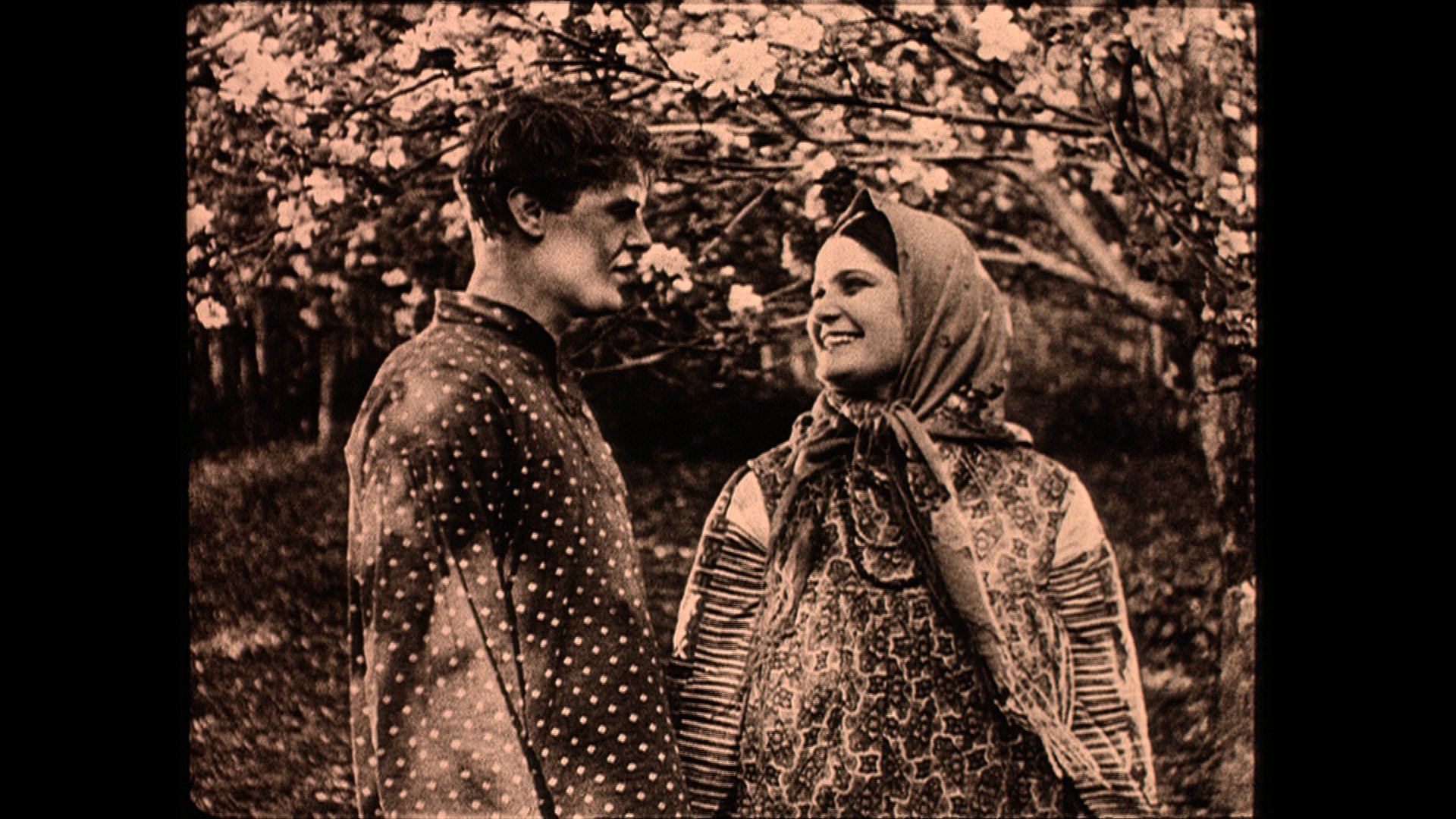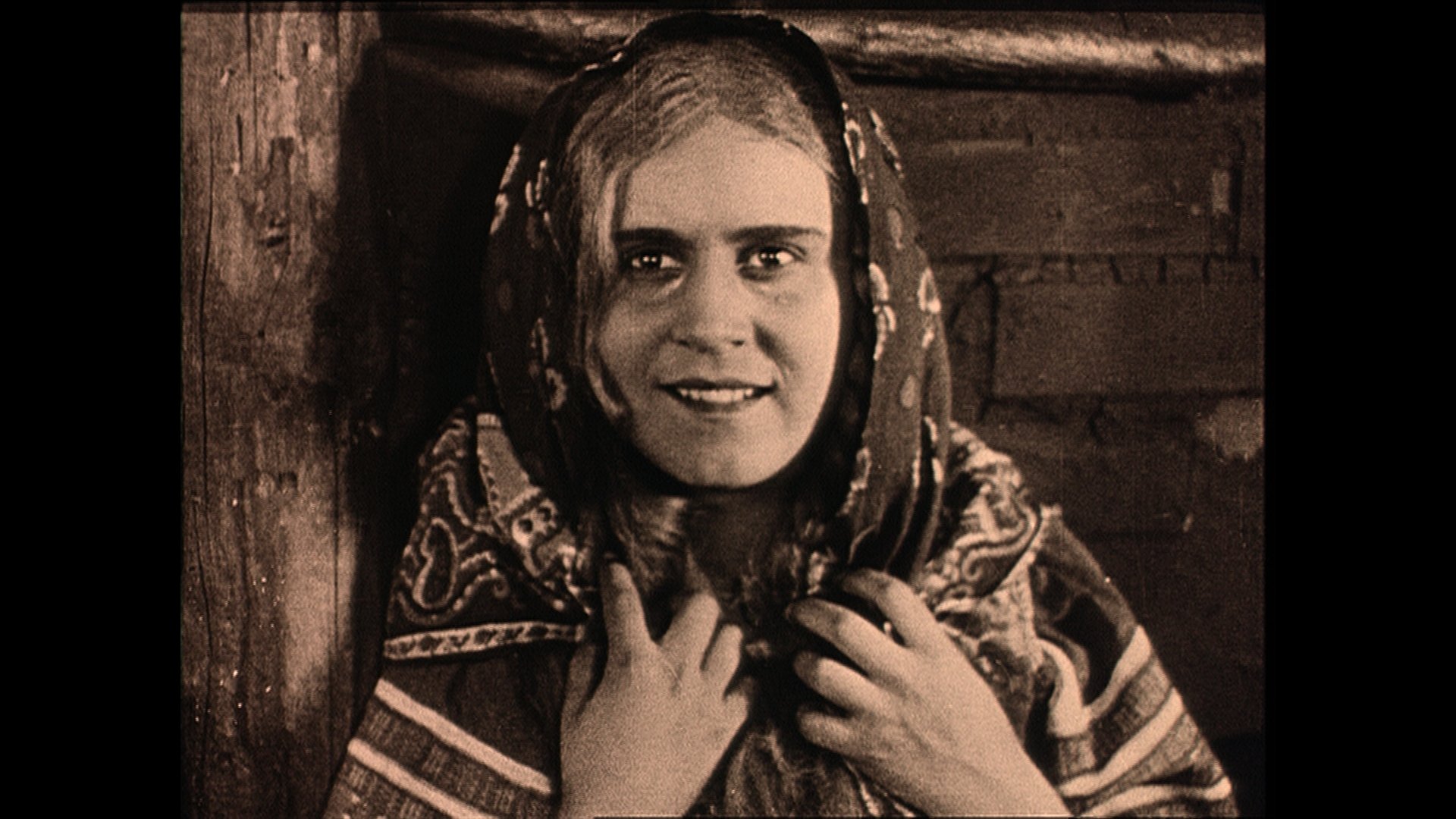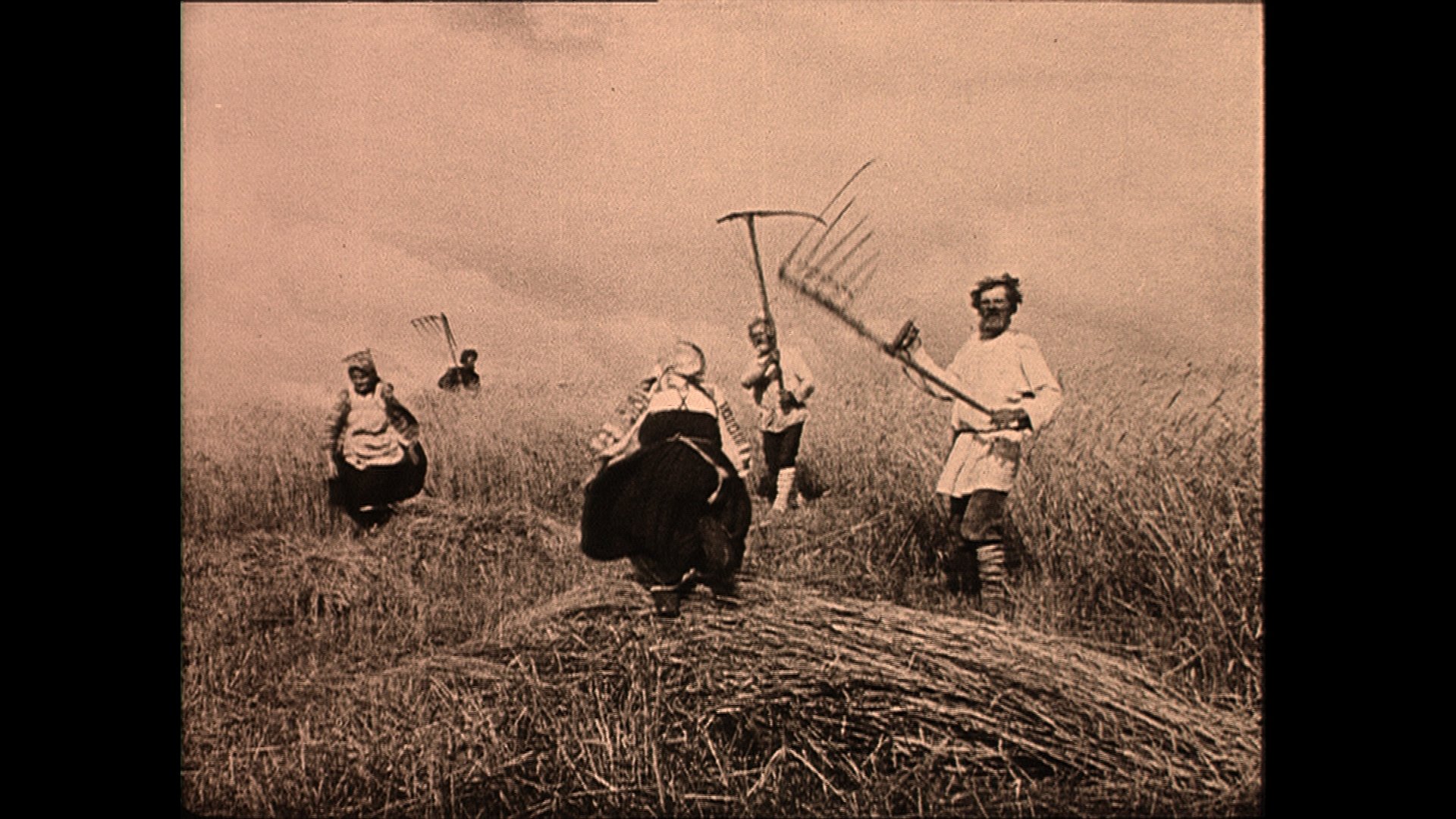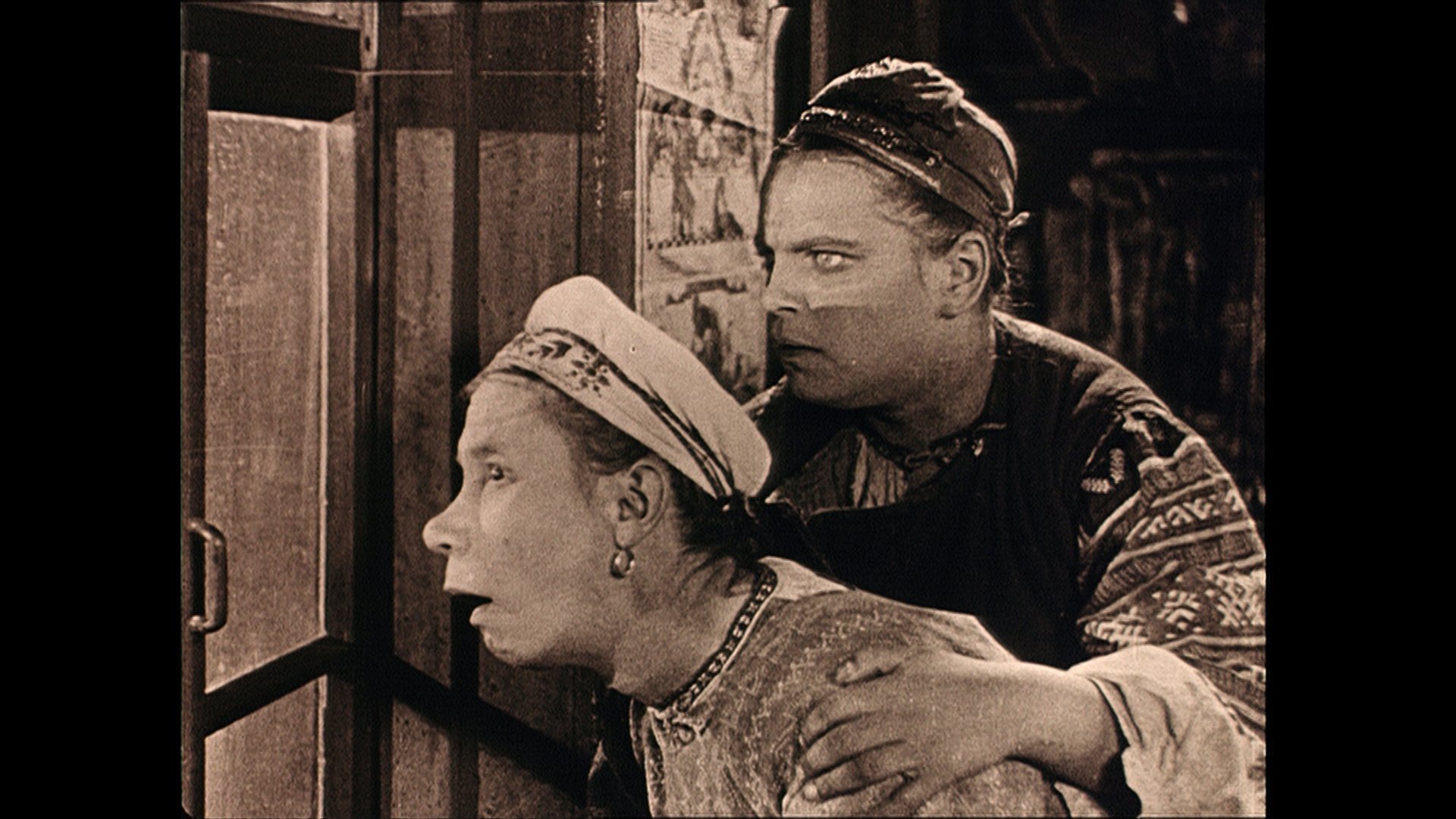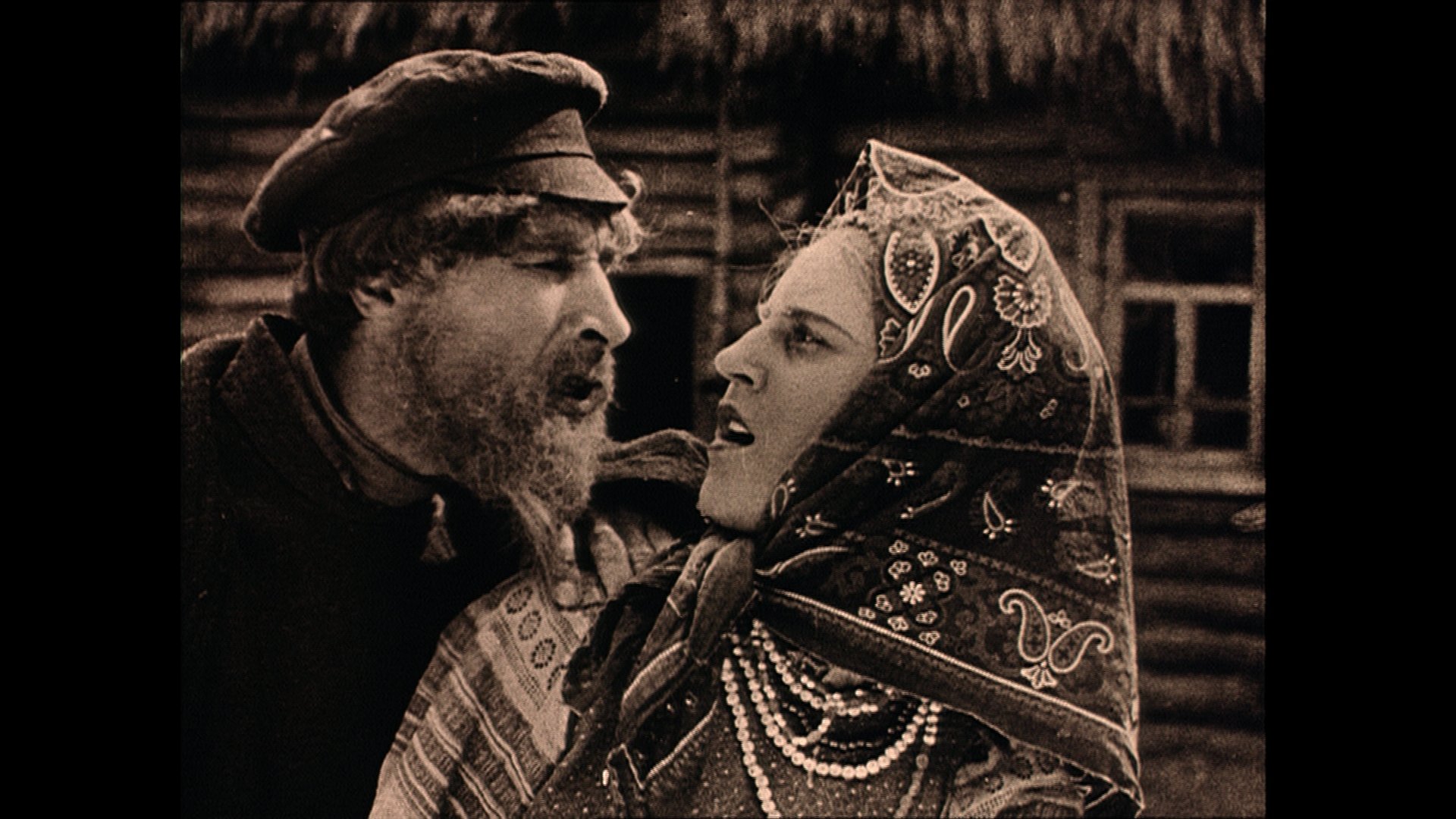
THE PEASANT WOMEN OF RYAZAN
The Peasant Women of Ryazan
(Baby ryazanskie) (Sowkino, USRR, 1927)
dir.: Ivan Pravov, Olga Preobrazhenskaya; script: Olga Vishnevskaya, Boris Altshuler; photog.: Konstantin Kuznetsov
cast: Raisa Puzhnaya (Anna), Emma Tsesarskaya (Wassilissa), Kuzma Yastrebitsky (Wassilij Schironin), Georgi Bobynin (Iwan), Ivan Savelyev (Nicolai), Olga Narbekova (Matwejewna), Yelena Maksimova (Lukerya)
DCP, 89’; tinted; intertitles: EN, subtitles: PL; restored 2008; source: Lobster Films
In the village of Ryazan in the spring of 1914, Anna, an orphan raised by her impoverished aunt, falls in love at first sight with Iwan, son of the rich peasant Wassilij Schironin. Happily, the feelings are mutual. The pretty girl also catches the eye of Wassilij, who decides to arrange the wedding of his son and the girl. Meanwhile, Iwan’s sister, Wassilissa, against the will of her father, gets involved with the local blacksmith, Nikolai. When war breaks out, the two young men are both drafted and have to leave their homes.
One of the best and most interesting Soviet films of the 1920s, it effectively combines melodramatic conventions with ethnographic and psychological values, and well thought-out dramaturgy with beautifully composed shots. This portrait of a Russian village is rich in realistic detail, with clearly-drawn heroines symbolising the diversity of female attitudes.
This was the most important film made by Olga Preobrazhenskaya, a Russian film pioneer and one of the first women in Europe to stand behind a camera. After beginning as a theatre actress, she made her cinema debut in The Keys to Happiness (1913), directed by Vladimir Gardin and Yakov Protazanov, before becoming the first female Russian film director in 1916 when she made Miss Peasant, a film version of the famous short story by Alexander Pushkin. Shot in the village of Sapozhok, which has remained unchanged for three hundred years, The Peasant Women of Ryazan was the first collaboration between herself and Ivan Pravov, but she was definitely the dominant partner in the duo, with her decision to cast debutants Emma Tsesarskaya and Raisa Puzhnaya in the main roles particularly successful. Although this very popular movie touched on rural themes, as was desired by Soviet propaganda, it still found itself criticised for its insufficiently progressive stance; today, this lack of a propaganda load, so characteristic of movies of the time, is to the film’s advantage. The director herself continued her career until the 1940s and the Stalinist purges, building up an impressive filmography of around a dozen movies, and also working as a lecturer at the Gerasimov Institute of Cinematography (VGIK). (KW)
Lobster Films restored the film in 2008 with the support of the University of Chicago. A new duplicate negative made from a 35 mm nitrate print found in France was the source for the restoration.
introduction to the movie: Svetlana Furman
section: FOUR SIDES OF THE WORLD
music by: Jakub Zimończyk
SATURDAY | OCTOBER 30
19:00 | screening room: MAŁA CZARNA

